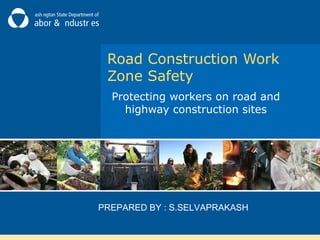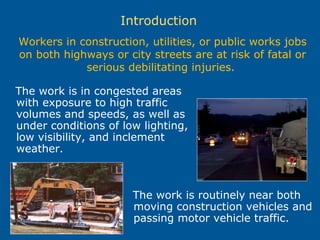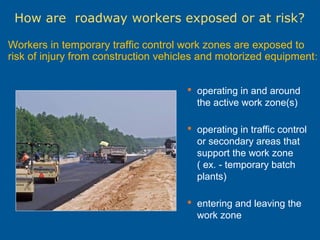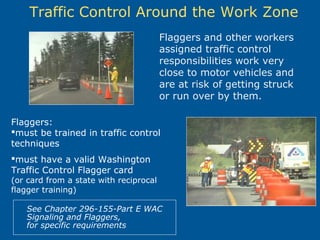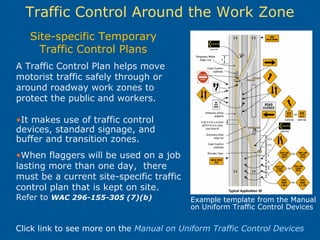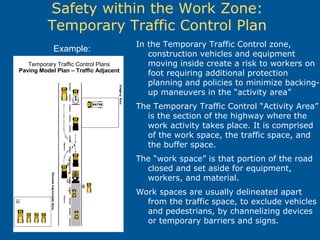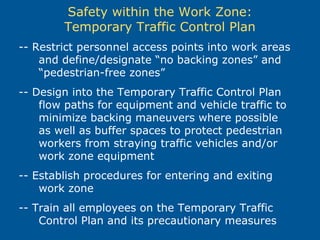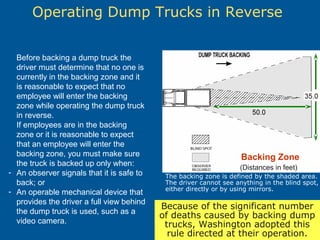This presentation discusses road construction worker safety hazards and fatalities. It notes that over 844 roadway construction workers died from 1995-2002, mostly from motor vehicle or construction equipment accidents. Specific dangers discussed include workers on foot being at risk from multiple hazards like construction vehicles, impaired drivers, and large blind spots that vehicle operators have. The presentation emphasizes the importance of having traffic control plans, using flaggers and signs properly, restricting access points and backing zones for vehicles, and workers wearing high-visibility clothing. It provides examples of regulations on backing safety for dump trucks to protect workers on foot.
